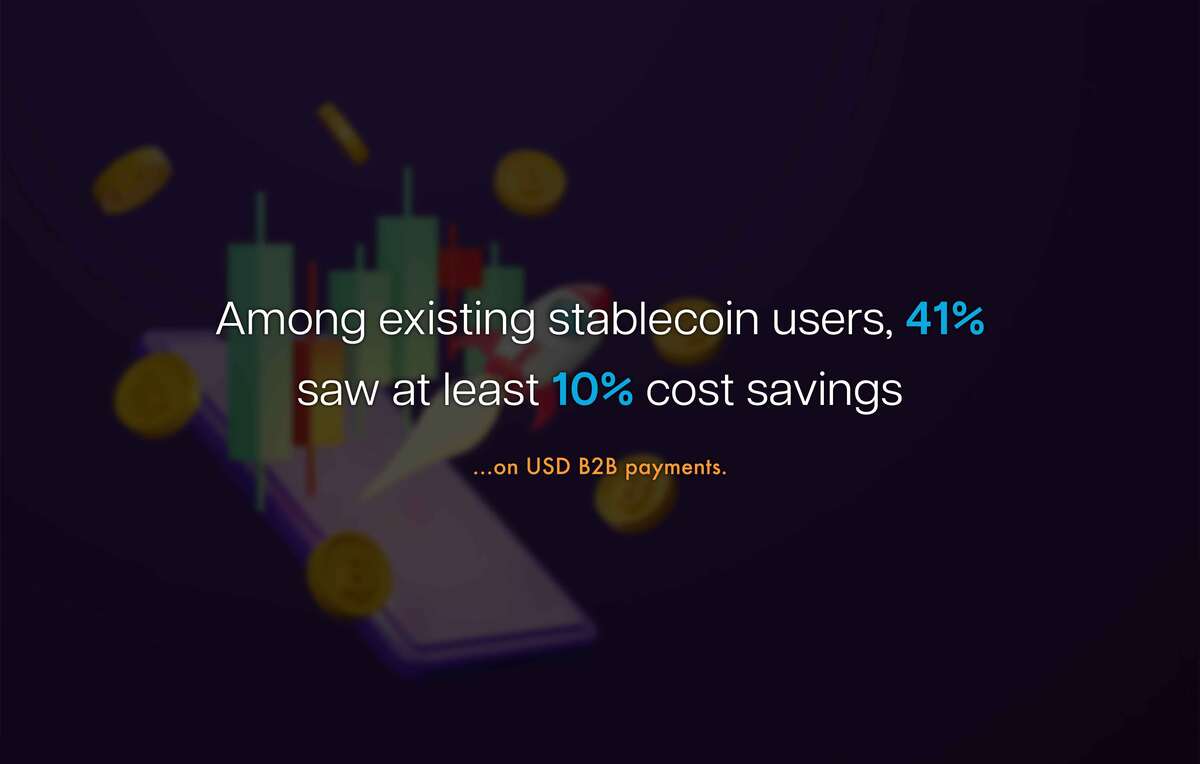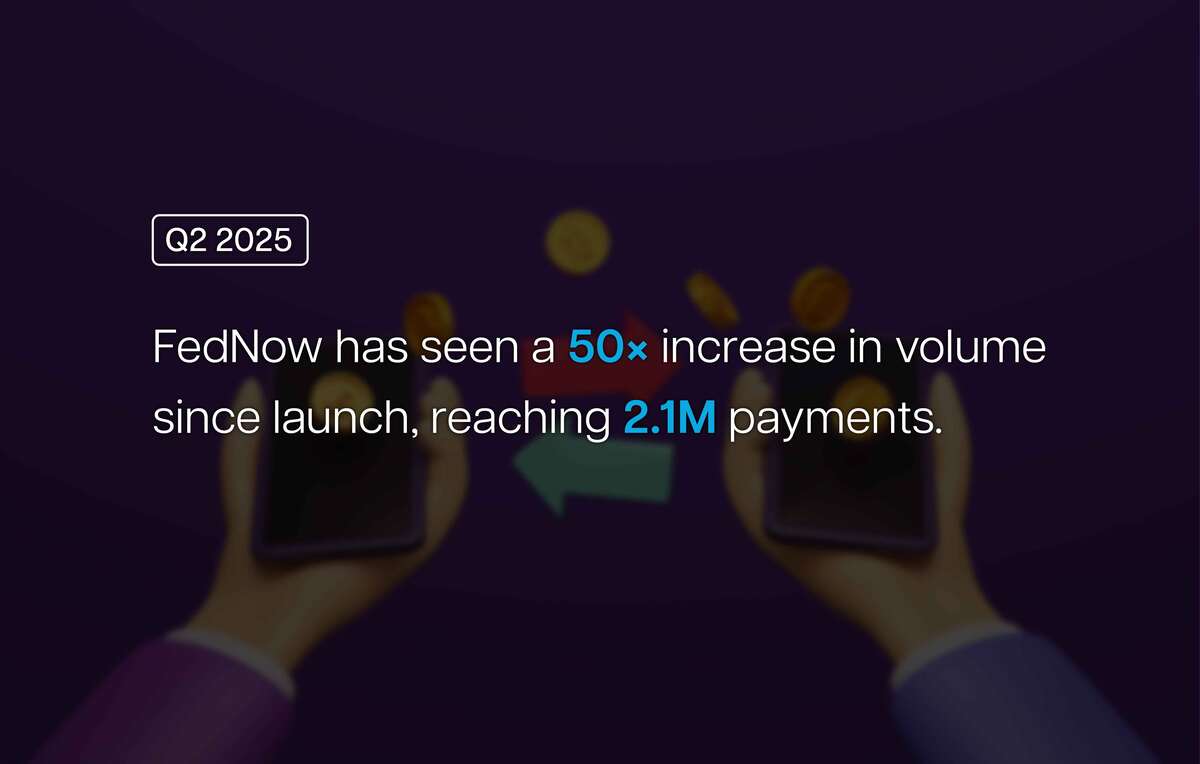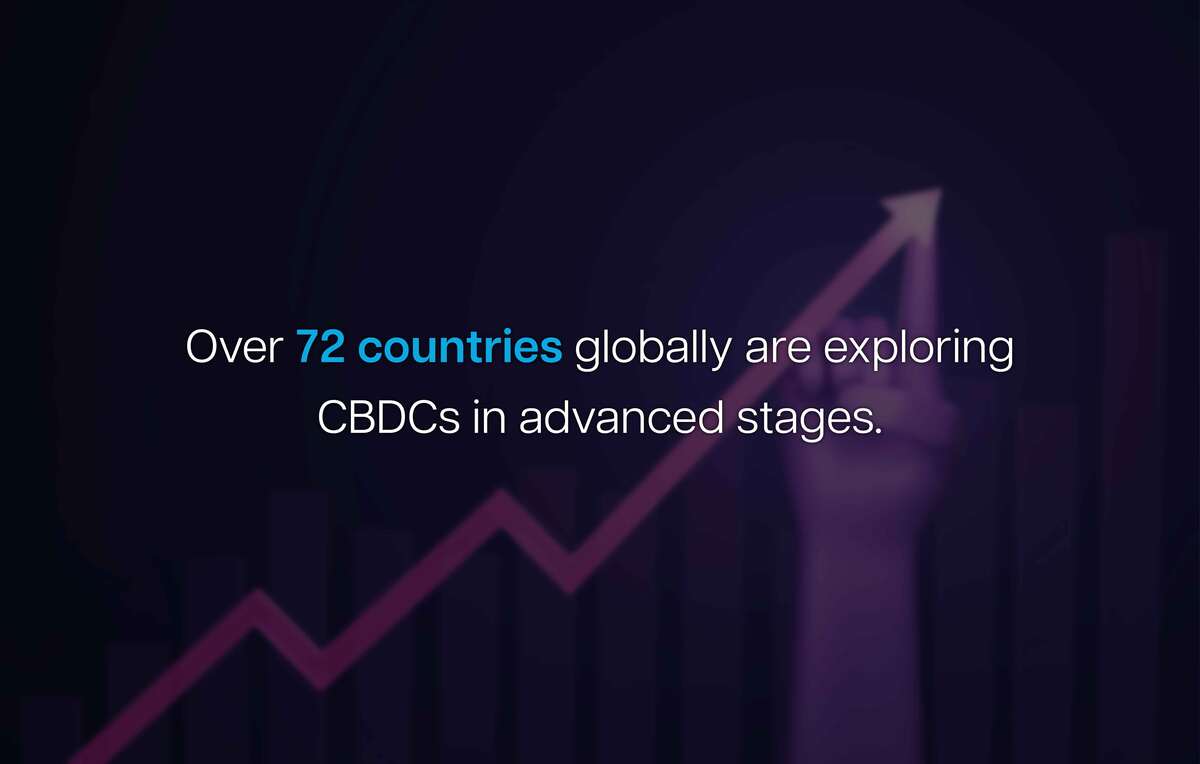AI-Driven Payments, Stablecoins & Agentic Commerce: 2025 Industry Report

No hidden fees. Ever.
Real-time accounting
SOC 1 & SOC 2 compliance
Expert human support

Table of Contents
Executive Summary
By 2025, stablecoins and AI-driven “agentic” commerce have moved from pilots to mainstream momentum. Stablecoin adoption is booming in payments, with firms reporting that in 2024 stablecoins accounted for nearly half of transaction volume on one major platform [1]. Surveys find 90% of banks and fintechs “taking action” on stablecoins [1]. Cross-border and B2B flows are top priorities: stablecoins promise much faster, round-the-clock settlement than legacy rails [1][1]. At the same time, powerful AI agents are emerging to automate purchases and payments. McKinsey projects that U.S. B2C “agentic commerce” could generate up to $1 trillion by 2030 (globally $3–5 trillion) as AI assistants negotiate deals and transact on behalf of users [2]. Industry data already show explosive growth: TRM Labs estimates stablecoin transaction volume jumped ~83% YoY to over $4 trillion in Jan–Jul 2025 [7]. The convergence of these trends – automated agents transacting through blockchain and programmable rails – is redefining payment flows. Firms must adapt to new settlement technologies, evolving regulations, and competitive pressure from crypto-savvy players. This report analyzes key market trends, technological drivers, regulatory developments, and implications for merchants and PSPs at the intersection of AI agents and stablecoin payments.

Key Market Trends
Explosive Stablecoin Adoption
Stablecoin payments have surged. On-chain data show stablecoins now represent ~30% of all crypto transaction volume, and hit a record >$4 trillion in the first seven months of 2025 (up 83% YoY) [7]. This reflects rapidly growing usage in payments, not just trading. One analyst notes that “stablecoins processed $32 trillion in transactions in 2024 alone” (≈$5.7 trillion for actual cross-border payments) [12]. Surveys confirm that this growth is reaching mainstream institutions: about 13% of banks and corporates already use stablecoins for payments, and over half of non-users expect to adopt them within 6–12 months [8]. Likewise, 90% of financial-services firms report they are “taking action” on stablecoins [1].

High-Value Flows, Cross-Border Focus
The initial use cases are skewed toward large, cross-border flows and high-risk sectors. Traditional banks are twice as likely to prioritize cross-border payments as a use case [1], and many corporate treasury groups use stablecoins to move funds overnight between markets. Fireblocks reports growing stablecoin use in Latin America and Africa corridors for import/export B2B payments [1]. Industry studies estimate that 5–10% of global cross-border transactions may shift to stablecoins by 2030 – roughly $2.1–4.2 trillion of payments [8]. Large issuers like Circle already hold significant Treasury buffers (e.g., ~$20 billion in T-bills as of Jan 2025) to back USDC, indicating the scale of corporate treasury use [6].
Performance vs. Cost
In surveys, respondents rank faster settlement and liquidity improvements as the top benefits of stablecoin payments [1]. For instance, 48% cite speed as the biggest gain, far more than the ~30% who mention cost savings [1]. This suggests firms value continuous (24/7) settlement and better cash-flow control. Many companies report significant cost reductions: among existing stablecoin users, 41% saw at least 10% cost savings on USD B2B payments [8].

Growing Supply and Liquidity
Stablecoin supply has ballooned. BVNK reports that “stablecoin supply grew from $5 billion to $305 billion in five years” (as of late 2025) [12], driven by demand for dollar-settled digital cash. This abundant liquidity is crucial for enabling large corporate transactions. Stablecoins are rapidly transitioning from a niche tool to a core part of the global payments stack.
Technological Drivers
Agentic AI & Automated Payments
Advances in AI are enabling autonomous payment agents. AI assistants can now generate one-time virtual card credentials, fill digital wallets, reconcile invoices, and negotiate dynamic payment terms [4]. Leading providers are integrating AI into payment flows. Mastercard’s 2025 Agent Pay program introduces “Agentic Tokens” so AI bots can securely purchase goods or pay invoices on behalf of users [9][9]. In a cited use case, an AI agent managing a small business’s procurement “optimizes payment terms and manages logistics” and then completes a cross-border payment using a Mastercard virtual corporate card token [9]. Visa has released developer tools (the Trusted Agent Protocol) to help merchants verify AI agents and process their payments [10]. Payment networks are partnering with IBM, Microsoft, and others to operationalize agentic commerce [3][9].
Blockchain and Smart Rails
Blockchain rails and stablecoins enable programmable invoices and payouts via smart contracts. AI agents can trigger payments automatically when certain on-chain conditions are met or adjust settlement in real time based on market data [4]. Blockchain settlement offers 24/7 availability, settlement in minutes, and finality with no chargebacks [12][12]. Fintechs are building turnkey APIs enabling companies to convert fiat to stablecoins behind the scenes and settle instantly without holding crypto themselves [12]. Blockchain serves as a high-performance backbone for AI-managed payments, offering speed and programmability beyond traditional rails [12].
Modern Payment Rails
FedNow, the U.S. instant payments network, has seen a 50× increase in volume since launch, reaching 2.1 million payments ($245 billion) in Q2 2025 [11]. Yet adoption remains limited across banks. Global initiatives like SWIFT gpi and CBDC pilots expand instant-pay infrastructure, but stablecoins increasingly serve as alternative rails for cross-border flows. PSPs are pursuing multi-rail strategies that integrate blockchain rails alongside FedNow, RTP, and card networks to meet rising demand for both speed and reliability [11].

Regulatory and Ecosystem Developments
United States
In July 2025 Congress passed the GENIUS Act, establishing a federal charter and strict rules for “payment stablecoins” [6][13]. The law requires issuers to be backed 100% by high-quality reserves (cash, Treasuries), submit monthly attestations, and comply with rigorous AML/KYC standards [13]. The act exempts regulated payment stablecoins from securities or commodities classifications, providing critical clarity. Additional legislation, including the CLARITY Act, aims to streamline crypto–bank relationships. Regulatory stance has shifted from passive monitoring to coordinated oversight among Treasury, the Fed, SEC, and OCC.
European Union
MiCA, effective June 30, 2024, created a comprehensive regulatory framework for digital assets across the EU [5]. Issuers of stablecoins (as “e-money tokens”) must be authorized, maintain segregated reserves, and publish detailed white papers [5]. Circle was among the first to obtain authorization to issue MiCA-compliant stablecoins [5]. Non-compliant stablecoins face delisting or operational restrictions across European platforms.
Asia-Pacific
Hong Kong enacted a Stablecoin Bill in 2023 regulating fiat-backed tokens. Singapore finalized its Single-Currency Stablecoin (SCS) framework, effective around 2026, requiring 100% reserves and strict segregation rules [13]. Many jurisdictions across APAC continue active CBDC development; over 72 countries globally are exploring CBDCs in advanced stages [33].

Industry Standards and Infrastructure
Cloudflare, Visa, Mastercard, and others are developing standards for AI agent authentication to ensure safe agentic transactions [10]. Instant-payment networks such as FedNow and SEPA Instant continue onboarding fintechs. BIS’s mBridge project signals multi-currency, cross-border CBDC-style settlement on the horizon. The fragmented regulatory landscape requires robust regtech tools for compliance across stablecoin and AI-driven payments.
Implications for Merchants and PSPs
Merchant Readiness for Agentic Commerce
Retailers and B2B platforms must prepare for AI-driven buying. This means creating agent-ready commerce systems that authenticate AI agents, accept tokenized payments, and preserve shopping context [2][9]. Visa’s Trusted Agent Protocol, backed by major commerce platforms, allows merchants to verify certified AI buyers and process payments seamlessly [10]. Merchants may need to simplify flows, store preferences securely, and adopt conversational interfaces for agent transactions.
Programmable Invoicing and Dynamic Payments
In B2B, payments will become fully automated. Programmable invoices can stipulate delivery, FX, or milestone conditions before triggering payment. AI procurement agents can negotiate partial payments or adjust terms based on risk profiles. Agents already autonomously match invoices to payments and execute settlement in real time [4]. PSPs should build API tools enabling merchants to approve, automate, and audit agent-initiated invoice flows.
Security and Risk Management
AI-driven payments introduce new fraud and compliance challenges. Merchants and PSPs must implement multi-factor AI agent authentication, real-time risk scoring, and detailed audit trails of agent instructions. Tokenization ensures AI agents cannot exceed pre-authorized spending limits [9][10]. PSPs will need AI-powered fraud systems to detect abnormal agent behavior. AML/KYC obligations will increasingly extend to AI agents and associated digital wallets. Regulatory surveys highlight stablecoin compliance as a top enterprise concern [8].
Strategic Opportunity and Competition
AI + stablecoins represent both a threat and an opportunity. Card networks are rolling out agentic payment solutions [9], crypto payment firms are enhancing institutional settlement rails, and PSPs must innovate rapidly. PSPs should expand stablecoin clearing capabilities, offer EUR and USD stablecoin settlement, and integrate smart-contract–based B2B payments. Early adopters benefit from lower FX costs, better liquidity, and improved settlement speed [8]. Merchants can leverage stablecoin settlement to enter emerging markets, reduce cross-border friction, and strengthen supply chain reliability.
Conclusion
The payments landscape in 2025 is at a dramatic inflection point. Stablecoins are being woven into the core of global B2B and cross-border payments, driven by their speed, liquidity, and 24/7 availability [1][8]. AI agents are simultaneously becoming primary buyers, with AI-driven commerce growing over 4,700% YoY in mid-2025 [10]. These trends reinforce each other: programmable money gives AI agents the infrastructure to transact autonomously. For Revitpay and its merchants, this means rethinking payments strategy by investing in stablecoin rails, integrating agentic APIs and tokenization frameworks, and staying ahead of regulatory transformations. Those who act quickly, building secure, scalable infrastructure for AI + stablecoin payments, will capture a disproportionate share of the next decade’s global commerce flow.
Works Cited
[1] Fireblocks, State of Stablecoins 2025
[2] McKinsey, The Agentic Commerce Opportunity
[3] Deloitte Insights, Intelligent Automation with Agentic AI
[4] Infosys, The Promise and Perils of Agentic Payments
[5] Goodwin Law, MiCA Implementation
[6] Federal Reserve Bank of Kansas City, Treasury Demand and USD Stablecoins
[7] TRM Labs, Crypto Adoption and Stablecoin Usage Report 2025
[8] EY-Parthenon, Stablecoins: Adoption, Optimism, and Regulatory Clarity
[9] Mastercard, Agent Pay Press Release
[10] DigitalCommerce360, Visa/Mastercard Agentic AI Tools
[11] eMarketer, Real-Time Payments Trends 2025
[12] BVNK, Blockchain in Cross-Border Payments
[13] Paxos, Regulatory Landscape for Stablecoins
Supercharge your Payments
RevitPay is here to help you scale smarter — from your 1st transaction to your 100,000th.
Previous
Next
Frequently Asked Questions
Recent Articles
A Seamless Start to Smarter Payment Processing
Request an Application
Submit for Approval
Start Processing
Explore More Online Payment Solutions
Everything you need to process payments wherever, whenever.
Seamless & Secure Payment Processing
Payment Methods That Power High Risk Businesses
We offer a wide range of secure, flexible payment methods tailored to the needs of high risk merchants. From credit card processing and mobile payments to ACH, eCheck, and more, our solutions are built to help your business accept payments confidently.
Credit Cards
Fast, familiar, and essential.
Give your customers the convenience of paying by credit card while maintaining the fraud protection and flexibility high risk merchants need.
Mobile Payments
Payments on the go.
Whether in-store or remote, accept transactions via smartphones and tablets, keeping your business agile and responsive.
Bitcoin & Crypto Payments
Stay ahead of the curve.
Expand your payment options to bypass traditional banking barriers and get paid faster—with global reach and fewer limitations.
MOTO Payments
Mail and telephone orders made easy.
Process card-not-present transactions securely with MOTO functionality, ideal for businesses that take payments by phone or through manual orders.
ACH Payments
Lower fees, higher reliability.
Automated Clearing House (ACH) payments are perfect for recurring billing or high-ticket items, offering a secure, bank-to-bank alternative to cards.
eCheck Payments
Modernize check payments.
Accept digital checks with ease, streamlining your processing while reducing risk and delays often associated with traditional paper checks.
Seamless Continuity Billing for Subscription-Based Businesses
Looking to support subscription models? Our Continuity Subscriptions solution offers automated recurring billing, built-in autobill features, and reduced payment churn—perfect for businesses that rely on predictable revenue.

Find the Right Way to Get Paid
Whether you’re running an online store, accepting payments remotely, or operating in a high risk space, RevitPay gives you the tools to process transactions with confidence and ease.
A Seamless Start to Smarter Payment Processing
Request an Application
Submit for Approval
Start Processing
Ready to get started?
Join businesses who are saving thousands each year with RevitPay.




